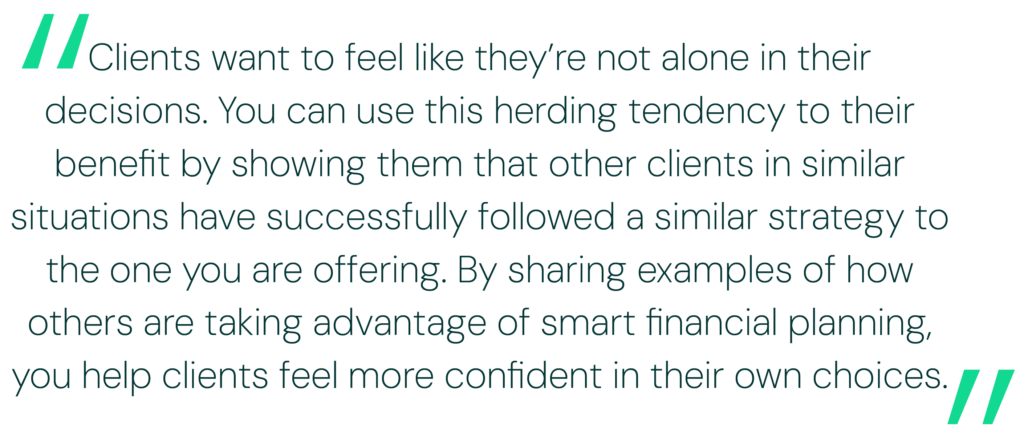Understanding Behavioral Finance
Ever wonder why clients do some of the things they do?
It’s because they’re human!
That’s why understanding behavioral finance—which is the study of the effects of psychology on investors—is going to help you gain clarity around why people make emotional decisions about money.

Your clients likely make some financial choices driven by emotions and ingrained behaviors rather than logic each day. As their financial professional, when you can recognize these patterns, you’re able to guide them toward smarter decisions that align better with their long-term goals.
We’ll walk you through you how to spot and work with common biases and aversions to create better client outcomes.
Anchor Bias: When clients fixate on a number, they miss the bigger picture
Just like shoppers focus on a “suggested retail price” to judge whether a sale price is a good deal, clients often anchor to the first number they encounter when it comes to other areas of their financial life.
This number they anchor to can shape their perception, even if it’s not relevant to the current situation. For instance, if they lived through a long bull market or heard about an interest rate on a friend’s annuity in 2022, that figure becomes an “anchor” in their mind. They may use it as a benchmark for future decisions, leading to unrealistic comparisons or expectations.
However, financial professionals can use anchor bias in a positive way to help clients make more informed decisions.
For Example, if a client is considering safe options like CDs, you can start by discussing current CD rates. Once they’ve anchored to that lower rate, introduce the option of a fixed indexed annuity (FIA), which becomes more appealing because the FIA typically offers higher potential returns. While FIAs may not match stock market-level returns, compared to CD rates, they can become a more attractive option for protection-conscious clients looking for some growth potential.
Give them data that both supports and challenges their view. Gently introduce alternative viewpoints by sharing relevant examples and information that helps broaden their perspective. Consider creating a reading list that includes various viewpoints on key financial topics.
Help clients see beyond recent events and focus on their personal financial strategy.
While stability has its place, being overly cautious can jeopardize long-term security just as much as taking too much risk.

Knowing this human tendency to avoid losses, annuities might be a good recommendation for a portion of client assets.
Annuities offer guarantees,* such as a steady income stream or protection against market downturns, which can ease some of the anxiety around potential loss.
By understanding how clients anchor to certain numbers, you can frame conversations in a way that works with their biases and helps them make decisions aligned with their long-term goals.
Confirmation Bias: Clients unconsciously look for information that supports what they already believe
Let’s face it: people love to be right.
Our minds naturally gravitate toward information that supports our existing beliefs. You’ve probably had a client who’s all in on a financial strategy and can quote every article that agrees with them. The tricky part? Gently pulling them out of that bubble without destroying the relationship.
The key is balance.
Give them data that both supports and challenges their view. Gently introduce alternative viewpoints by sharing relevant examples and information that helps broaden their perspective. Consider creating a reading list that includes various viewpoints on key financial topics.
By encouraging clients to weigh different sides, they can become more open to new ideas and better equipped to make informed decisions.
Recency Bias: Clients give too much weight to recent events and experiences
People tend to assign greater importance to something that happened recently and base decisions on that.
For example, if someone heard of a recent plane crash, they may be hesitant to fly even though the person doesn’t fly often, and plane crashes are rare.
A financial example is that during bull markets, clients may think the good times will never end and can often become overconfident and want to take on more risk in the market. During market declines, same thing, except now they want to abandon their long-term strategy out of fear.
Your job? Help clients see beyond recent events and focus on their personal financial strategy.
Share information about economic cycles to show how different market conditions have come and gone over time, so you can ensure your clients are well informed and build trust with them in any market.
Herding Bias: “But everyone else is doing it!”
There’s something about following the crowd that feels safe—even when it’s not the right move. Whether it’s jumping on the latest investment trend or panicking when the markets dip, people often feel more secure doing what others are doing, even if it’s counterproductive.
But this can also present an opportunity.
Anthony Nizzi, Director of Sales Development at Guaranty Income Life and certified in behavioral finance, explains, “Clients want to feel like they’re not alone in their decisions. You can use this herding tendency to their benefit by showing them that other clients in similar situations have successfully followed a similar strategy to the one you are offering. By sharing examples of how others are taking advantage of smart financial planning, you help clients feel more confident in their own choices.”
By using “social proof,”—demonstrating that others in their peer group are making the types of sound financial decisions you recommend—you make it easier for clients to follow through with the strategies you recommend. This helps build trust while also guiding them toward positive financial outcomes.

Uncertainty Aversion: Clients prefer known risks over unknown ones
People are weird about risk. They often choose a path where the risks are known, even if it’s not the best option, rather than venture into the unknown. It’s the classic case of “better the devil you know than the devil you don’t.”
A common example is keeping cash in a low-yield account because it feels safer, even though inflation will slowly erode its value over time. While stability has its place, being overly cautious can jeopardize long-term security just as much as taking too much risk. Help your clients see the consequences of both action and inaction in their financial plans.
By implementing goal-based planning and showing them that potential outcomes—not fear of the unknown—should drive decisions, you can help them overcome this aversion.
Myopic Loss Aversion: Short-term thinking magnifies the fear of loss
Loss aversion refers to the fact that people feel the pain of loss more intensely than the pleasure of gain.
As an example, loss aversion may lead to clients to overreact to a market decline, focusing more on avoiding a short-term loss than realizing potential long-term gains. Frequent account checking can magnify this fear, causing clients to want to change strategies based on temporary fluctuations.
Knowing this human tendency to avoid losses, annuities might be a good recommendation for a portion of client assets. Annuities offer guarantees,* such as a steady income stream or protection against market downturns, which can ease some of the anxiety around potential loss.
Consider scheduling regular review meetings at appropriate intervals to reduce reactive decision-making. Setting appropriate review periods helps clients maintain perspective and build confidence in their long-term financial journey.
Understanding behavioral finance puts you in a position to recognize and address the human behaviors that affect financial decisions.
Spot these patterns, use them to determine your approach, and guide clients toward better financial choices.
*Guarantees rely on the financial strength and claims-paying ability of Guaranty Income Life Insurance Company.
Understanding Behavioral Finance
Need more ways to harness behavioral finance to benefit your practice?
Give the Guaranty Income Life sales desk a call at 800-535-8110 for access to a consumer presentation that can help enhance your client interactions.

